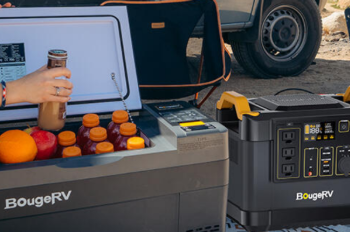2022 is a bit of a unique time to start an online business. On the one hand, it has never been easier to start an online store. eCommerce platforms make it easy to design a stellar website and many successful online businesses exist entirely on social media business pages. On the other hand, there has never been this level of competition for online retailers. The process of starting an online business has become so simple and accessible that competition could be coming from anywhere at any time. Because of this, it isn’t uncommon for new online brands to spring up from nowhere only to fizzle out a month later. Here are some tips to help you find long-term success with your online business.
What to Consider When Starting a Business
We know it can be exciting to start an online business, but remember not to get ahead of yourself. Before you can create a website, logo, or even a business name, you need to settle on a business strategy. In its simplest form, a business strategy has three components: a target audience, a problem to solve for that audience, and a solution to that problem. Defining these components will not only give you a simple game plan to follow but also help determine other important elements of your business. For example, defining your target audience might also help you find your niche in the industry. Here’s an example of a simple business strategy as defined above.
⦁ Target Audience: Third-party logistics companies in America
⦁ Problem: Many third-party logistics companies have environmentally conscious clients that worry about the pollution resulting from delivery trucks.
⦁ Solution: Offer green shipping that is designed to reduce the environmental impact of delivery.
Tips:
⦁ Assess Your Idea’s Viability
Before you can jump into creating your business, you need to assess the viability of the product you’ll be offering. The best way to determine if you have a viable idea is to hold it up to as much scrutiny as possible. Remember that excitement doesn’t necessarily translate into a viable product from a business perspective. The public might be excited about your product, but that doesn’t mean they’ll buy it. Here are a few sample questions you might use to determine the viability of your product idea.
⦁ Is there already a successful business selling a similar product?
⦁ If so, how do you plan to stand out?
⦁ Is there long-term demand for your product?
⦁ Can you produce and distribute your product and make a profit?

⦁ Determine Your Niche
Now that you’ve settled on a simple business plan you should be in a good position to identify your company’s niche in the market. To find your niche, you need to identify very specific opportunities for your business. The easiest way to do this is by analyzing your target audience. You likely already know your target audience’s age, location, and passions. Compare your target audience to the competition’s target audience to identify any demographics where you might have the edge. For instance, let’s say your company finds that it has a much stronger hold on consumers in New Zealand compared to the competition. You could find ways to take advantage of your presence in New Zealand by focusing your marketing efforts on the area or offering free shipping specifically from NZ couriers. However, your brand’s niche doesn’t need to be derived from your target audience. You could also find opportunities by comparing your product to the competition. Maybe your product is cheaper or has features that other companies’ products are missing. Find any opportunity to differentiate yourself from the competition and take full advantage of it.
⦁ Strong Branding
One of the few things that all successful businesses have is a good branding strategy. When it is done well, branding gives your company a personality that your target audience can relate to. This increases the level of engagement a company receives from its target audience. People are more likely to respond to a company that they feel they share similar values with. In particular, strong branding will make it easier to engage with the public by increasing public recognition and public perception.
Public recognition is a measurement of how many individuals in the public are aware of your brand. Consistent branding helps more consumers recognize your company by getting them familiar with it. For instance, you would likely recognize McDonald’s golden arches from just about anywhere. That’s because Mcdonald’s keeps their branding incredibly consistent in every form. The golden arches are featured on their signs, in their commercials, and even on their products like happy meals. The McDonald’s logo is nearly unavoidable and that has resulted in a lot of recognition.
Public perception is a measurement of how favorably the public views your company. It isn’t concerned with how many people know your brand, only with how they feel about your brand. Good branding will resonate with your target audience and encourage them to view your company positively.
⦁ Design and Build Your Website
The final step in the process of starting a business is arguably the easiest. Thanks to today’s wide array of website-building tools and platforms, you don’t need coding experience to put together a great website. In fact, some website-building platforms offer templates that ensure your entire website feels consistent no matter how large it grows. But be warned, some templates can be difficult to customize if you don’t have experience editing a website through HTML.






















